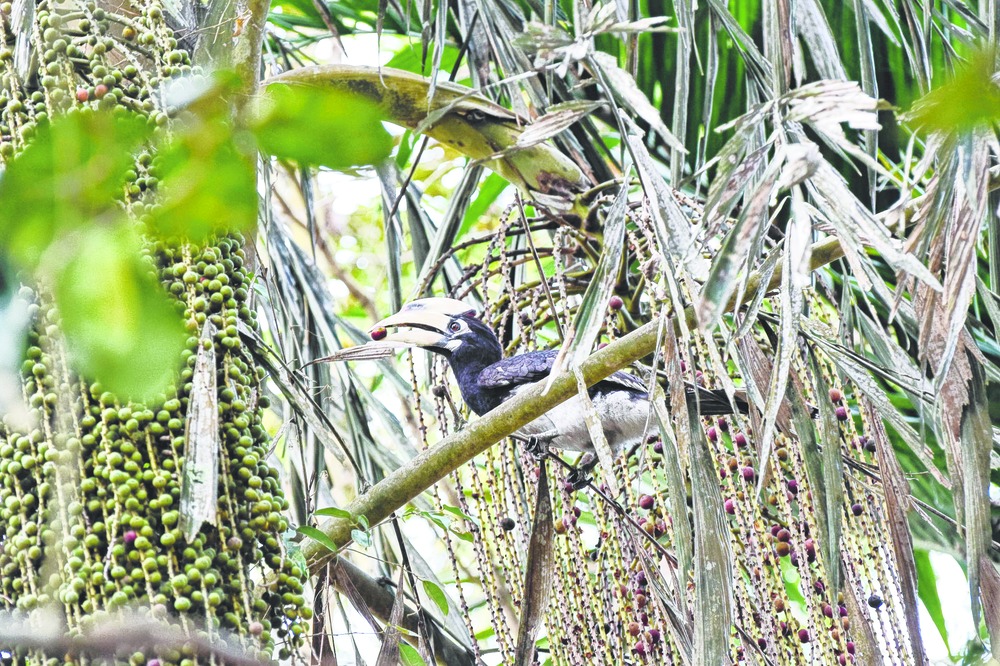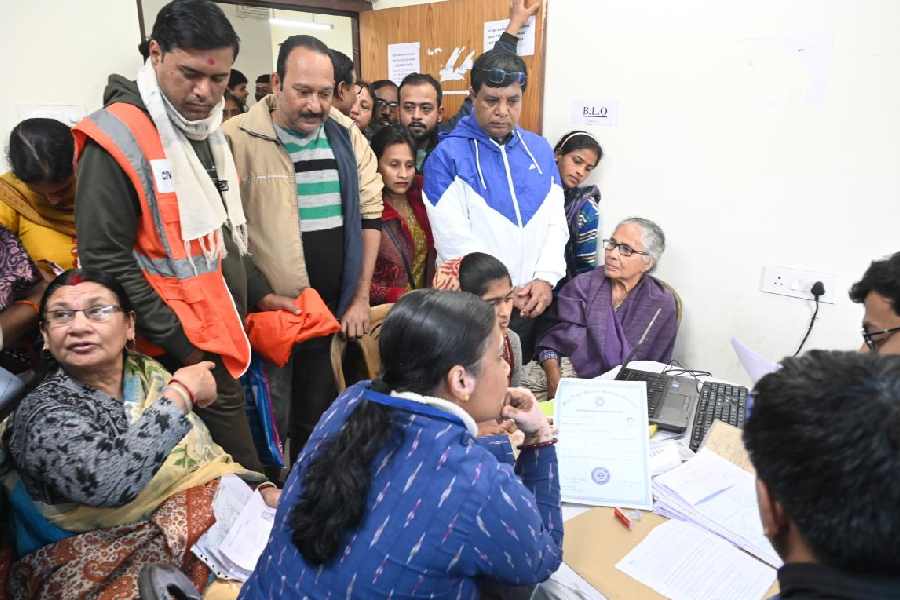
Demow, Jan. 24: A dozen or so rarely seen Oriental pied hornbills have adopted the remote Dhemesi area of Upper Assam as their home, feeding and breeding fearlessly in the midst of human habitat.
In a bid to protect the birds - called dhanesh in Assamese - from being killed and eaten for their meat, Assam Bandhu, an organisation engaged in rural development, put up posters and initiated a signature campaign yesterday, in which the villagers pledged to protect the birds.
Nearly 10km from the stretch of National Highway 37 at Demow in Sivasagar district, the Dhemesi area spills over to Dibrugarh for about 7km.
It is mostly populated by the Ahom community, with contiguous villages being named Chetiagaon, Konwar Sook, Bora Sook and so on.
Suryya Chetia, who heads the organisation, said they would contact the forest department to plants trees, mainly fruit trees, so that the birds would not go hungry.
"It is important that the birds are not killed and eaten for food. Once they sign this pledge they are bound to protect the birds," he said.
What makes the villagers so protective of the birds is the tale of a soldier, a resident of the locality who had killed a male hornbill, and had died while returning home after the end of World War II in a train blast.
For years villagers had heard the plaintive cry of the female hornbill, mourning its mate.
The villagers now treat the birds indulgently, never chasing them away even when they finish off a whole bunch of ripening bananas or papayas from the trees.
A villager, Bharat Bora, said he had spent more than Rs 1,000 last year to treat an injured hornbill. He took it all the way to Dibrugarh to be operated upon and its leg set by a vet.
Each time he calls, "Babu, Babu", one gets to hear a kekek, kek, kek, response from one of a pair of birds sitting on a tree nearby his house.
"He recognises me and I can locate him by the way he alights on a tree with a slight limp," he said.
An employee of the inland water transport department, Bora was suspended for the long period of absence to take care of the bird.
He was, however, reinstated when the forest department wrote in his favour.
Lambudar Bora, on whose land stand the two xilikha trees on which the birds breed, said, "As long as I am alive I will not cut down these trees but my sons may not have the same sentiments."
The birds pierce a hole into the trunk, lay a couple of eggs and then seal it up again, leaving only a smaller crack, from which the mother's head and beak are only visible.
"After the eggs are hatched, the mother remains inside this nest. According to the people, she loses her black feathers and is covered with soft down like the hatchlings for a long period while she remains inside with the babies, being fed for the duration by the male. The day is not far off when they will be feeding from our hands," Mamun, a resident of Chetia gaon, said.










